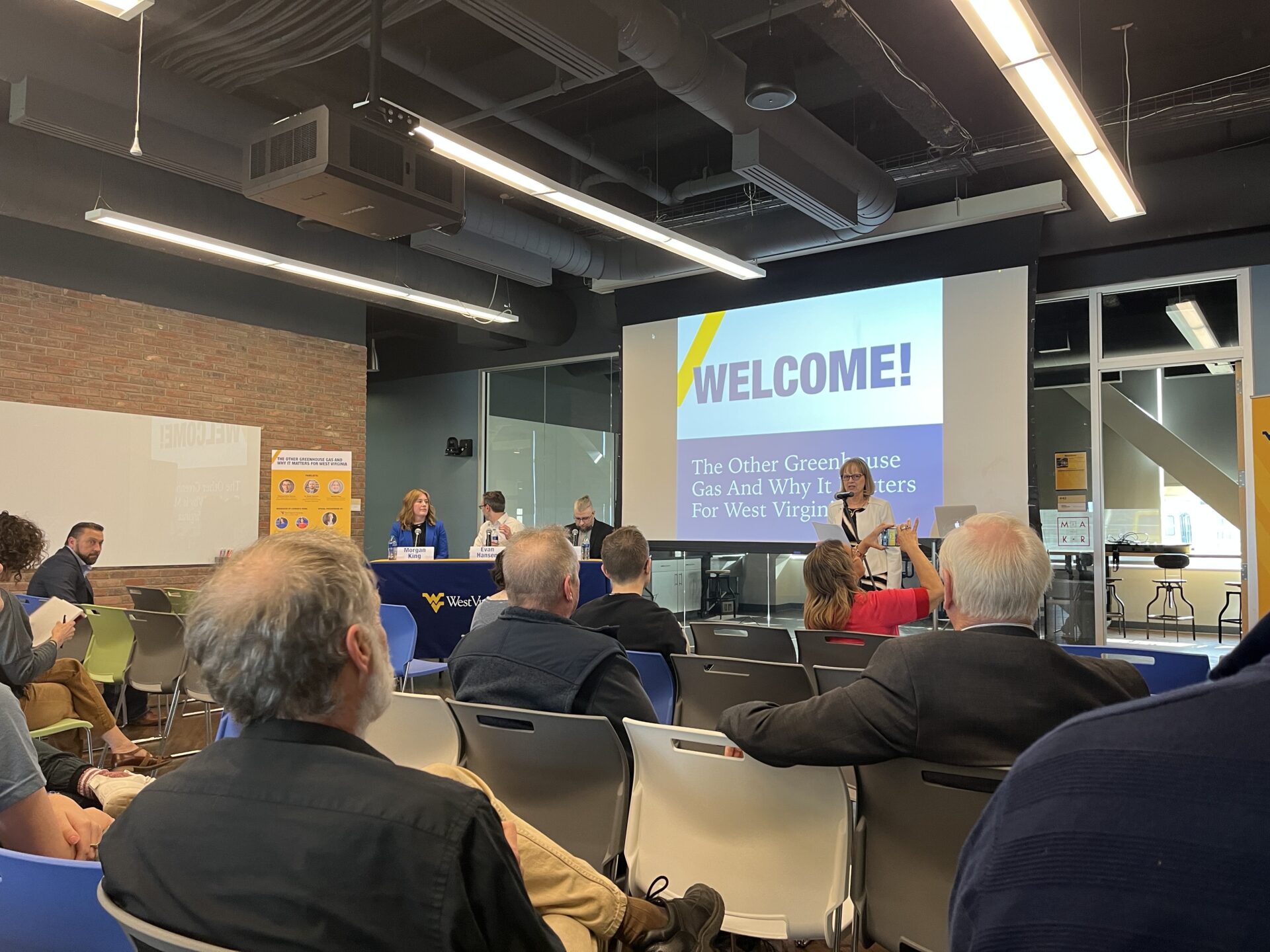West Virginia University’s Energy Institute hosted a panel Thursday evening about reducing the state’s methane emissions from abandoned wells and leaking distribution systems.
Methane is a potent greenhouse gas that contributes to climate change, with research saying emissions into the atmosphere are more potent than carbon dioxide in the short term.
“If you’re leaking a couple of percent (of methane emissions), you’ve more than offset your carbon benefits,” Derek Johnson, panelist and associate professor of mechanical and aerospace engineering, said. “You really have to look at every step and try to minimize it every step. So, at the wellsite, at the pipeline, at the compressor stations, at the distribution to you know, local pipelines and even local meters that would go into a house.”
Panelists discussed methane leaks from oil and gas wells. The state’s Department of Environmental Protection tracks 55,000 active and 12,000 inactive such wells statewide and has identified more than 4,000 sites that have since been abandoned.
Around half the state’s population lives near well sites, according to research journal Environmental Health Perspectives.
Fellow panelist Morgan King, of the West Virginia Rivers Coalition, said leaks from abandoned sites could result in worsening health locally, as well as more local climate-related disasters.
“We’ll see more severe and frequent storms, we’ll see 100-year-flood events, which we’re already seeing more often. That should not be happening every year in just a single town,” King said.
Other advocates say mitigating leaks could also result in more jobs alongside West Virginia’s existing energy economy, which is the fourth-largest producer of marketed natural gas in the nation.
“West Virginians have been really good at exporting a lot of its natural resources,” Trina Wafle, assistant director of WVU’s Energy Institute, said. “And what I think we could be doing and should be doing more is inventing and taking advantage of our natural resources, again, to build our economy, diversify our economy, and attract more people.”
House Bill 3110 passed during the 2023 legislative session, and it increases funding for the Office of Oil and Gas. The increase could double the number of state inspectors to around 20. They would investigate and cap well leaks throughout the state, though at a rate of one inspector per thousands of wells.
The state also received federal funding last year to plug abandoned wells as the U.S. Environmental Protection Agency looks to strengthen its current methane emission rules.
